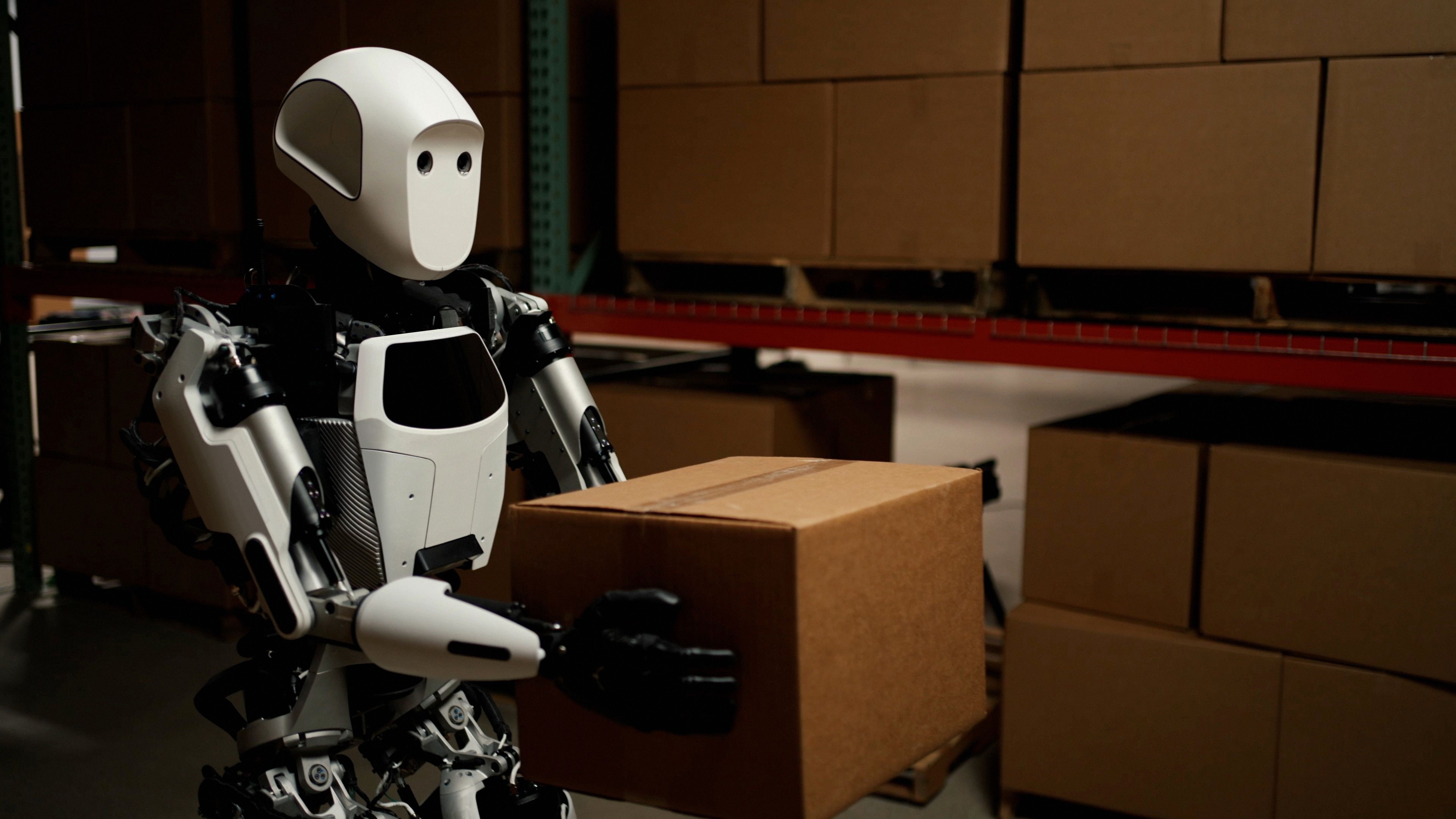Humanoid robots are starting to work side by side with actual people in warehouses for the first time, moving heavy boxes and containers.
Labor-saving robots with dexterous fingers and a human appearance are expected to reshape the workforce in various fields, from eldercare and food prep to manufacturing and heavy industry.
- The trick is to get them to walk without falling, hold a charge long enough to be useful and manipulate things without fumbling.
- The brass ring? Housework — because who doesn't want a robot to do the dishes and the laundry?
The newest humanoid robot, unveiled Aug. 23, is an all-electric model named Apollo made by an Austin-based startup called Apptronik.
- Apollo is 5 feet, 8 inches tall, weighs 160 pounds, and can lift 55 pounds. (See a video of the bot in action.)
- "Science fiction has promised us these for a long time," Apptronik CEO Jeff Cardenas tells Axios
Apollo, which can run for four hours before its battery needs to be swapped, is one of several first-generation robots designed for live action in the workplace.
- "Initially, it's going to start working in the supply chain — doing basic material handling tasks, moving boxes and totes," Cardenas says.
- This version "has initial applications, but it's a software update away from a new feature or functionality," he adds. "Long term, really the sky's the limit in terms of what these types of systems will be able to do."

Apptronik — which won't name its customers yet — has only pumped out a handful of production prototypes, but says Apollo is suited for "mass manufacturability."
- "Right now we have two Apollos that are built, and we're building another four," Cardenas said. "These are the alpha units ... our engineering validation prototypes."
- The next step will be producing beta units — fewer than 100 — which will work outside the lab, Cardenas said. "From there, we move into full production, by the end of 2024."
Apptronik, with 85 employees, came out of the Human Centered Robotics Lab at the University of Texas and worked on NASA's first bipedal robot, Valkyrie.
- Other companies at or near Apptronik's stage of humanoid robot production include Figure, Agility Robotics, and Sanctuary AI.
- Big names in the field include Boston Dynamics and Tesla.
🤖 What they're saying: Humanoid robots "could be economically viable in factory settings between 2025 to 2028, and in consumer applications between 2030 and 2035," per a Goldman Sachs Research report published last November.
- Goldman "estimates a $6 billion market (or more) in people-sized-and-shaped robots is achievable in the next 10 to 15 years."
- "Such a market would be able to fill 4% of the projected U.S. manufacturing labor shortage by 2030 and 2% of global elderly care demand by 2035."
No humanoid robots have been "successfully commercialized yet," as Goldman Sachs points out, and some of today's iterations "can work in only short one- or two-hour bursts before they need recharging."
The human form factor is important for various reasons — making us warm up to Apollo as a colleague, for instance — but also enormously challenging.
- Robots of this type need to have "physical intelligence — things like balancing, walking, hand-eye coordination," as well as "cognitive intelligence — reasoning, understanding the world, making decisions," Cardenas says.
- The physical design of Apollo is "critical to making people comfortable working around and with humanoid robots," Apptronik said in a press release.
- "Digital panels on Apollo's face and chest foster easy communication," while its "friendly, human-like countenance" is meant to evoke a "congenial face-to-face exchange with a favorite co-worker."
Non-humanoid robots are starting to prove their mettle as security guards, autonomous taxis, kitchen workers, and delivery bots — but these are early days, and there are still lots of mishaps.
- No doubt we'll all grow more accustomed to more robots in our midst — even as we debate whether they're actually taking our jobs.
